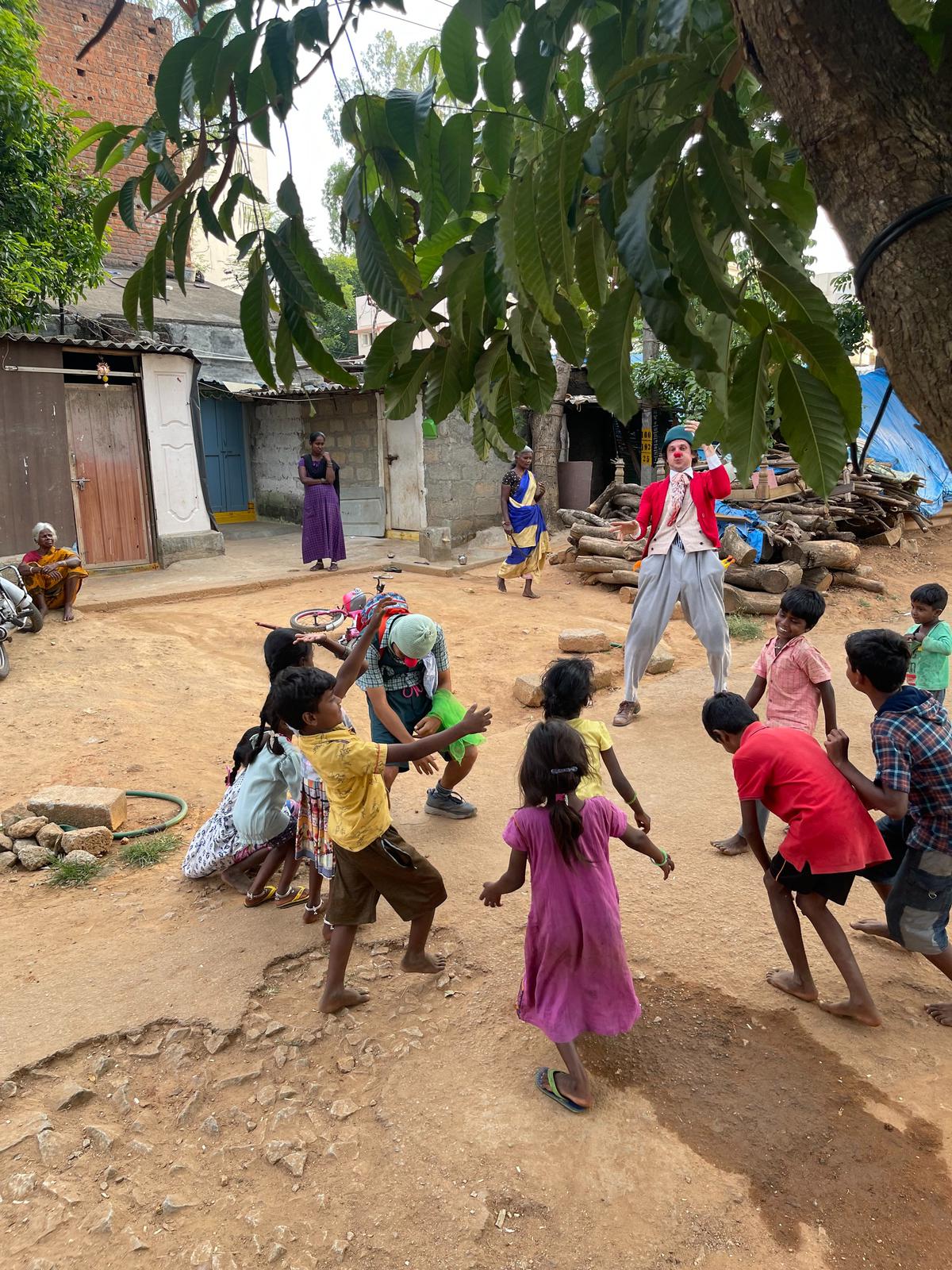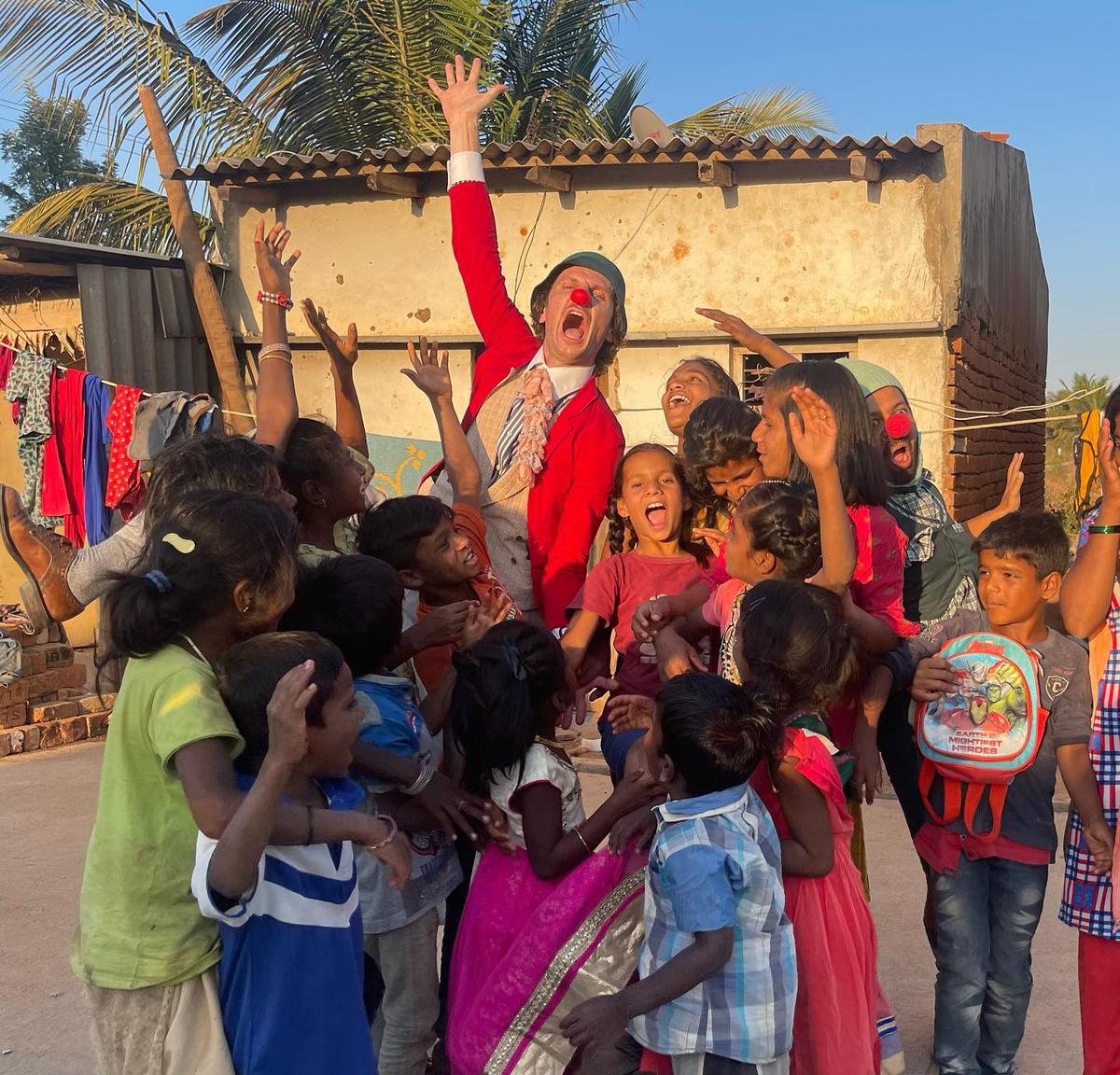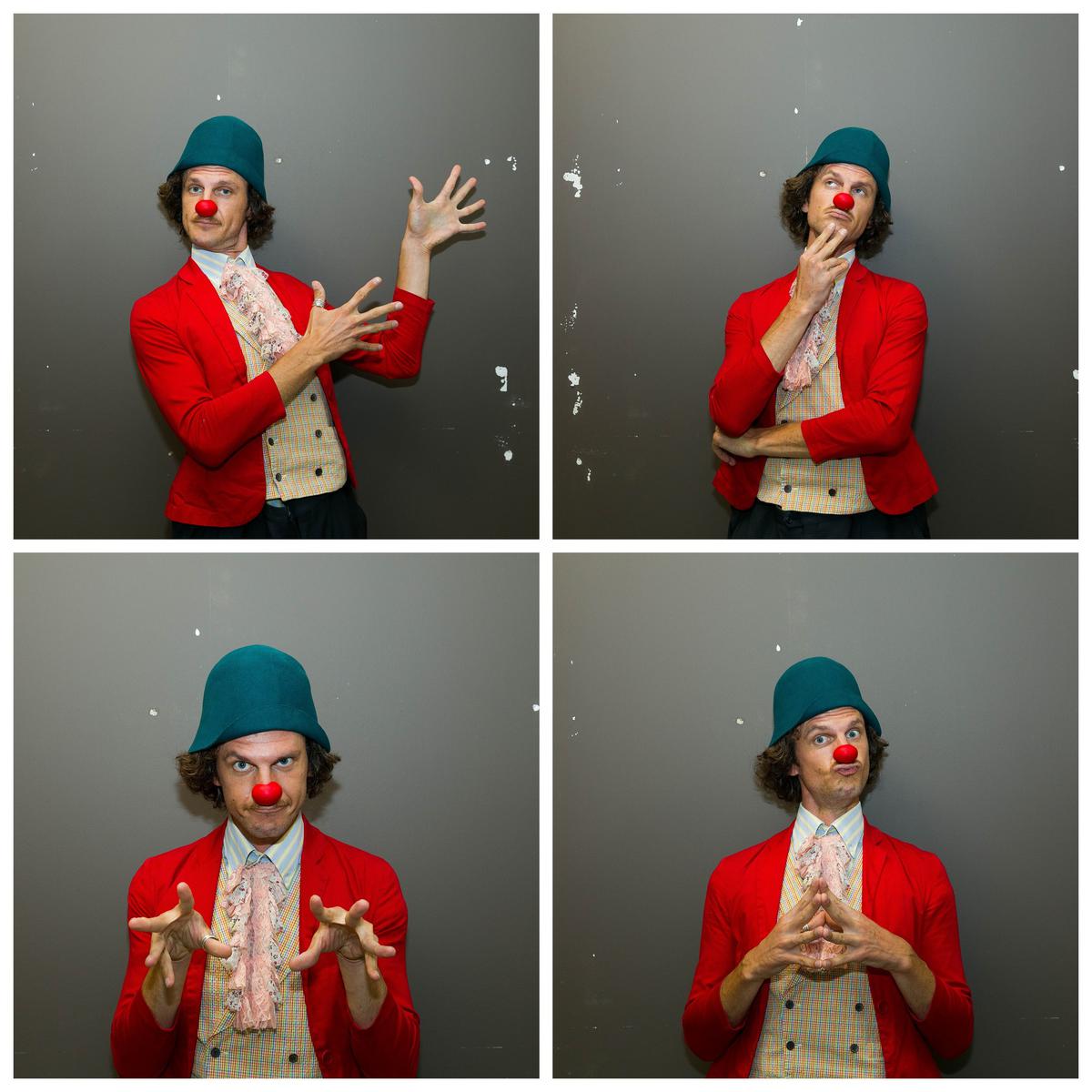A day with the Latvian clowning artiste Igor Narovski

Latvian clown artiste Igor Narovski
I got to know of clowning as a serious art form only a few years ago. Earlier, clowning to me was just a bunch of arbitrary, even nonsensical, goofing around. The fact that it was an intricate craft that one trained in was quite intriguing.
Recently, I got to watch the brilliantly endearing Vinay Pathak as a clown in the iconic Rajat Kapoor directorial Nothing Like Lear. The performance left me all the more fascinated with this craft. When I heard that the Conservatory for Arts & Artists had invited a Latvian clown artiste for a three-month workshop in Bengaluru, I knew I had to meet him.
Therapeutic effect
Igor Narovski is primarily a healthcare clown, who works with a therapeutic focus to his craft. He mostly practices clowning either in hospitals or in marginalised/displaced communities, and has been through extensive training for over a decade in handling such situations. I got the chance to sit down for a long chat with Igor and Harsha — who coordinated the training programme and the local engagements of the group — and also accompanied them on a clowning outing to a slum near Harsha’s home in Bengaluru. Parts of this were documented with the permission of the community.

Igor Narovski with kids during his recent visit to Bengaluru.
| Photo Credit:
Special Arrangement
Igor appeared to seamlessly slip in and out of the clown character while we were waiting for breakfast. He described a clown as an agent of change. A bridge between reality and imagination. A statement Igor made that stood out was “An actor plays Hamlet. A clown plays an actor, who plays Hamlet!” This brings in a whole world of possibility with it.
A healthcare clown adapts and changes, and cannot work with a fixed idea. The overarching focus though seemed to be on lightness. The clown transforms mundane situations into small games, bringing in a lightness and simplicity into the struggle of playing the game. For instance, through using a squeaky toy shaped like a syringe, kids are able to have fun with the object and overcome their fear. While clowning in general does not maintain a fourth wall, the stage still becomes a mask of its own in the performative context.

Latvian clown artist Igor Narovski with children in Tumkur.
| Photo Credit:
Special Arrangement
In healthcare clowning, the ‘audience’ feels more seen. They do not get lost in an invisible crowd. Though Igor does performative clowning as well, he doesn’t find the same joy in it. He was in the first cohort of healthcare clown trainees in Latvia, and they had experienced trainers from Israel, Brazil and other countries coming to teach them, while they established their practice. Healthcare clowning has been around for about three decades, with a major global conference that takes place every couple of years, bringing the community together.
The pedagogy is quite interesting. There are clear frameworks that a clown trains in. There are five fundamental principles of healthcare clowning — simplicity, honesty, generosity, lightness and joy.
The training involves developing sensitivity, learning to work with a partner, transforming emotions, bringing lightness to any situation, risk taking, distracting from pain, learning to create games and executing them in various circumstances. Beyond the specifics of clowning-related training, there is a lot drawn from other crafts that inevitably becomes a part of a clown’s repertoire. This could include music, story telling, and dancing amongst others. There is vast scope of integrating a multitude of practices into the art of clowning.

The Latvian clown artist Igor Narovski.
| Photo Credit:
Special Arrangement
Effects of clowning
Getting to witness Igor and Harsha transform into clowns and engage with people was a treat to watch. As Igor mentioned, the clown is not there to help people but to be helped by them. When played with honesty, it helps people identify themselves in the clown. The joy — as an inner sensation — and the lightness help experience life better.
As part of the training, 11 participants worked with HCG Cancer Hospital, where they had some memorable and heartwarming experiences. They have now formed a group called ‘Doctor Parrots’, to build partnerships with hospitals and incorporate their work therapeutically.
When asked if there was any difference between the experience of clowning in India and Europe, Igor replied that beyond a few possible cultural differences in interactions, human emotions are the same everywhere. The language of the clown is the language of a game. It doesn’t matter, which part of the world one is in. It’s universal.
For all the latest Entertainment News Click Here
For the latest news and updates, follow us on Google News.
